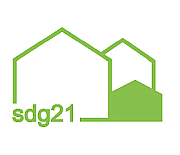A research project conducted by natureplus in conjunction with IFEU compares insulation materials with regard to their environmental impact throughout their entire life cycle, including recovery and recycling.


Which insulation material is the best? This question is extremely popular in the construction industry and can ultimately only be answered in the context of the respective construction. In particular, there has so far been a lack of a holistic overview that enables builders and planners to identify the strengths and weaknesses of the various insulation material alternatives in terms of their life cycle assessment, without having to disregard subsequent disposal. Such a study was presented by ifeu (Institute for Energy and Environmental Research Heidelberg) and natureplus e.V. at the end of 2019. Their research project "Holistic Evaluation of Different Insulation Alternatives" was funded by the Deutsche Bundesstiftung Umwelt (dbu) and the Baden-Württemberg Ministry of the Environment. It is to be presented for the first time on 21 February as part of the Vienna BauZ! congress.
From the cradle to the grave
With this study, a comprehensive ecological evaluation of insulation material alternatives was carried out, especially with regard to possible future disposal paths of the insulation materials (from the "cradle to the grave"). The most common types of insulation materials based on mineral, renewable and synthetic raw materials were evaluated, and their application in different building components to meet specified requirements for thermal and cold protection was compared. The life cycle assessment data of the insulation materials for the manufacturing phase were taken from the natureplus partner IBO Vienna after researching various databases. Subsequently, the waste life cycle assessments were prepared by ifeu, in which, in addition to the processing loads, the respective benefits from the secondary products or energy recovery were quantified and included in the balance. For each insulation material, the most favourable disposal option from an ecological point of view was determined. These disposal options were included in the product life cycle assessments and the final disposal of the insulation material was also taken into account.
Material recycling hardly takes place
The waste life cycle assessments of all insulation materials show in most cases the specific advantages of material recycling and thus the sense of returning the waste masses to the economic cycle. The processed waste masses from the insulating materials can be further processed into (other) products or also returned to the original production as raw material. In particular, the recycling of synthetic and some mineral insulating materials significantly reduces the ecological rucksack that these products bring with them from the production phase. Material recycling also makes sense in the case of products made from renewable raw materials, although their use as substitute fuel in cement works is currently still more advantageous from the point of view of climate protection as long as hard coal is burned there instead. In practice, however, the recycling of insulation materials is only practised in isolated cases or for research purposes. The report therefore concludes that research and development of possible material recycling should be promoted in industry and in the field of waste disposal.
In the result Advantages for insulating materials from renewable raw materials
If material recycling takes place at the end of the product's life - contrary to current practice - blow-in insulation materials and flexible mats based on hemp or jute perform best, provided that all insulation types can be used, followed by polystyrene EPS boards and wood fibre mats. Where, as for example on the exterior wall, only board-type insulation materials can be used, EPS performs best, provided that the EPS is recycled in such a way that EPS beads are saved in a subsequent application.
If end-of-life disposal is as in the status quo and the energy benefit is included in waste incineration, the above-mentioned products made from renewable raw materials remain in the lead, but polystyrene deteriorates and dry-process wood-fibre insulation boards improve, even moving into first place on the exterior wall. Without taking into account the energy benefit, wood fibre boards and EPS insulation materials lose their advantages compared to other board and mat insulation materials.
Source: natureplus, press release, 21.1.2020
Keywords: Building materials / Construction, Procurement, DE-News, Research, Climate protection, NaWaRohs, Sustainable management, New books and studies, Recycling, Resource efficiency, Thermal insulation, Life cycle assessment






